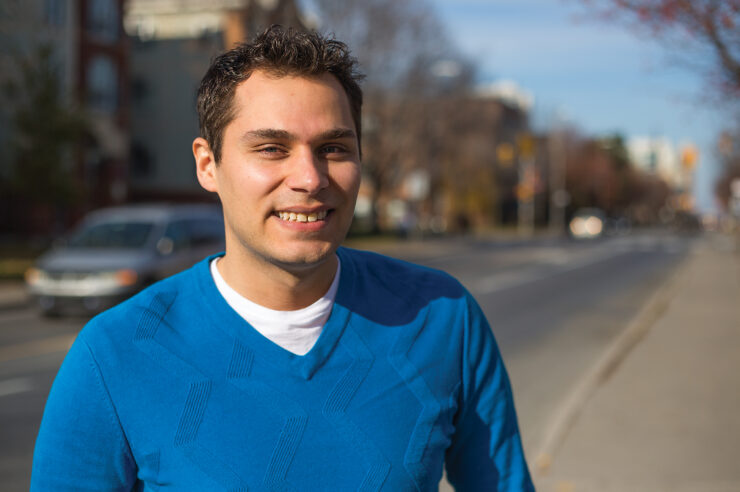Bionic eye technology uses laser light and cameras to improve vision
The possibility of a bionic eye might, in fact, be more of a reality than one would expect, thanks to Ross Cheriton, a PhD student at the University of Ottawa’s Chair for Research in Photonics.
Cheriton was recently hired by the Ottawa-Gatineau tech company iBIONICS to work on developing the retinal implants, with the purpose of giving sight to the blind.
Chariton is also currently working at SUNLAB, the U of O’s solar research lab, trying to improve the photovoltaic cell of the implant by turning the laser light from the camera’s signal into electricity to power the implant.
“You can imagine this retinal implant sits on the back of the eye somewhere, just like normal light coming into your eye,” said Cheriton. “It gets focused down into a point at the back of the eye so we make out an image.”
The implant will work by having a laser shine into the individual’s eye, but this light cannot be seen as it is beyond humans’ visible range. From there, cameras and sensors in the device will pick up the laser and thus power the implant.
Cheriton further explains that any type of camera can be used in the implant.
“You could have cameras that see x-rays, cameras that see infrared light, cameras that see ultraviolet (UV) light, and things like that.”
From there, the implant converts this signal from the laser into electrical signals, which the brain interprets as visual stimuli.
Though implants of this kind do exist already, they are only capable of generating low-resolution black and white images.
“In the near future we’re focused on people who need it the most. We want to improve people’s quality of life … we know these people that have issues with blindness that we can address with standard camera information.”
Though Cheriton’s primary focus is on helping the blind with iBIONICS, at SUNLAB he contributes to the field of photonics as whole by trying to convert specific colours of the light spectrum into electricity.
By optimizing devices for one colour of light, developers can later stack multiple devices to improve the over- all capture of white light. He suggests it’s possible to someday transform 60 per cent of a solar light beam into electricity.
Only time will tell what’s possible, but Cheriton believes the training he’s gained at the U of O will help him solve any problems in his research that may be around the corner.





